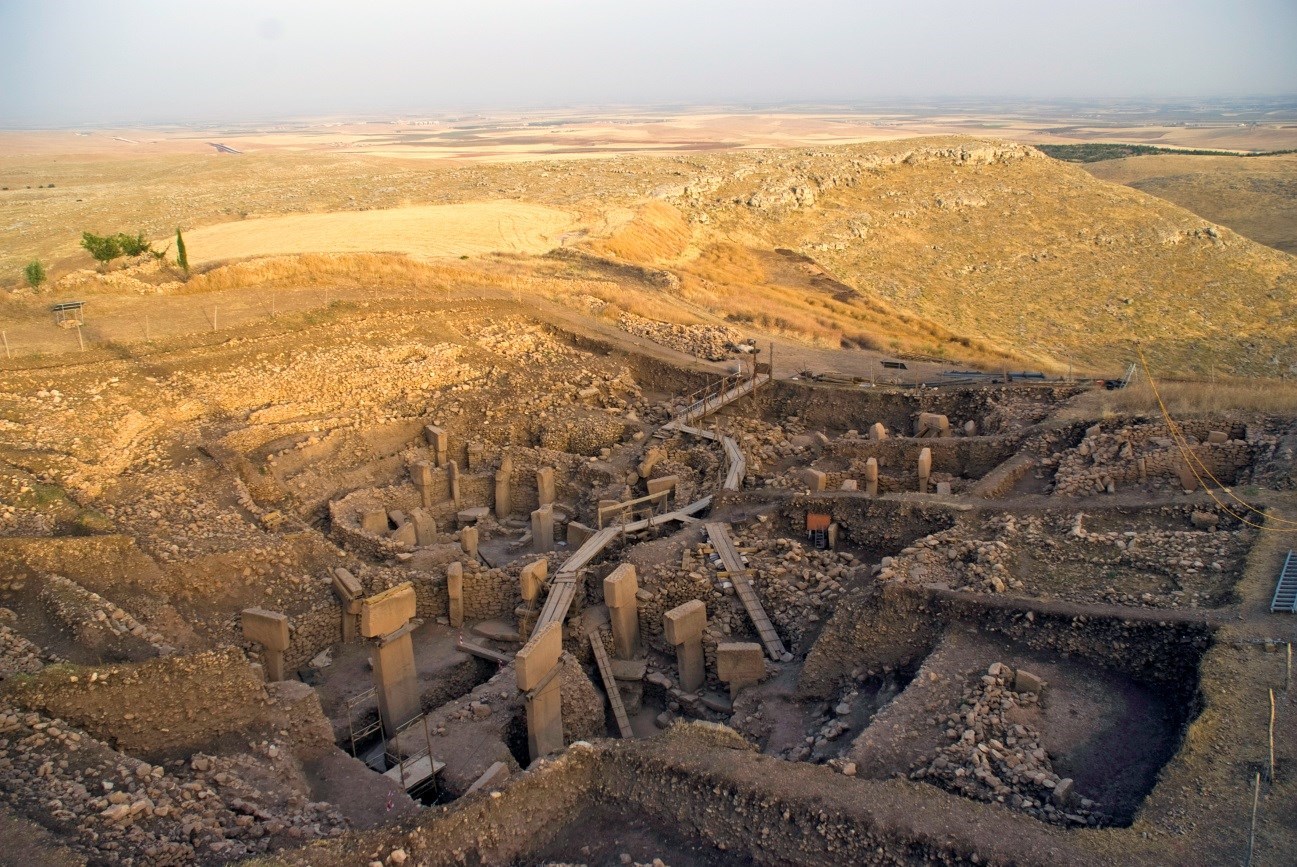You might have heard the name “Göbekli Tepe” thrown around in recent years. And that’s because this relatively recent archaeological discovery has raised more questions than it’s answered since its unearthing in the 1990s.
Archaeologists agree that most of the central structures at Göbekli Tepe used to serve a religious purpose. That wouldn’t be so surprising in and of itself – after all, most wonders of the ancient world had spiritual connotations, as well. However, its age sets it apart from landmark temples built by the ancient Greeks, Egyptians, and Romans. The structures predate some of mankind’s oldest architectural feats, and are even more sophisticated than some of their famed successors.
When Was Göbekli Tepe Discovered?
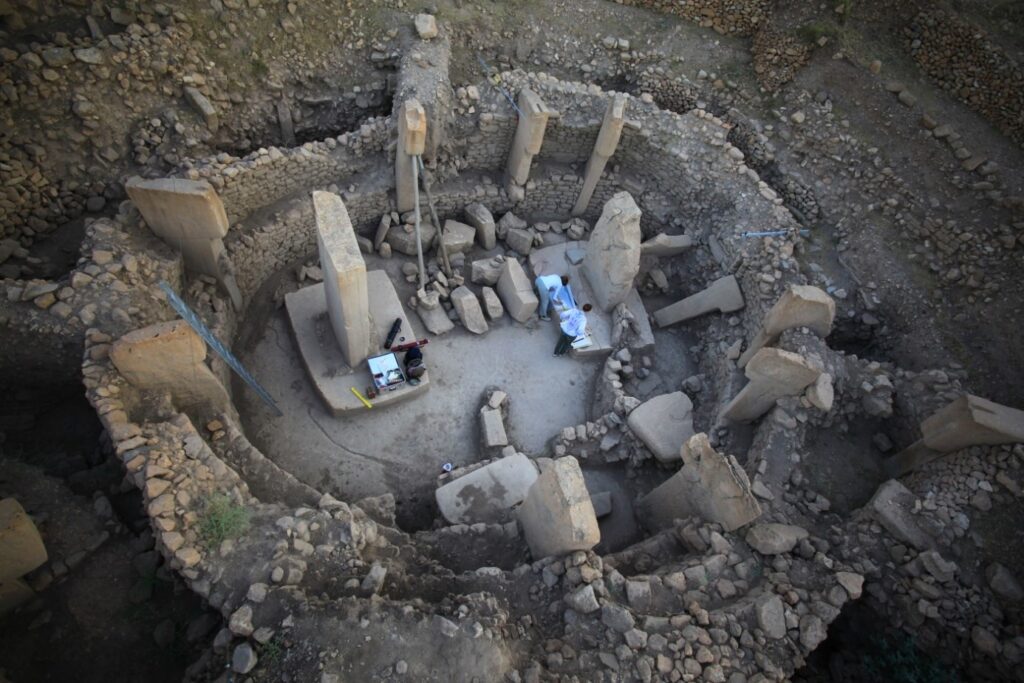
Located in Anatolia, a region in southeastern Turkey, Göbekli Tepe (Turkish for “Potbelly Hill”) was initially discovered in the 1960s by a group of archaeologists from the University of Chicago and Istanbul University. They quickly dismissed it as having little value, and it remained untouched for decades.
It wasn’t until 1995, over 30 years later, that the site was revisited by a German archaeologist Klaus Schmidt. Schmidt led the excavation team at Göbekli Tepe for the next 18 years, until his death in 2014. Most of what we know about this perplexing temple complex was uncovered by the German scholar and his team of researchers.
After Schmidt’s death in 2014, work on Göbekli Tepe continued, and it’s currently directed by Istanbul University’s Necmi Karul. It became a UNESCO World Heritage Site in 2018. Interestingly, as of 2021, only 5% of the complex’s total area has been excavated. One can’t help but wonder, what other secrets lie hidden beneath the Anatolian bedrock?
How Old is Göbekli Tepe?
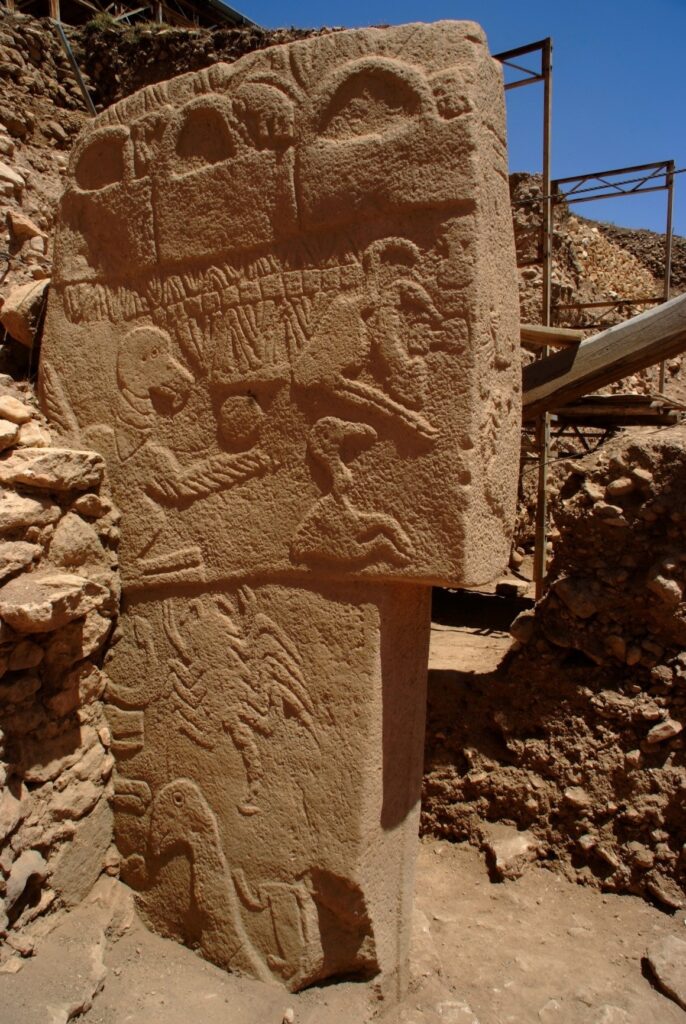
The Göbekli Tepe temple complex is dated to the Pre-Pottery Neolithic period, and is estimated to have been built around 10,000 B.C., making it 6,000 years older than Stonehenge. The next-oldest discovered structure, the Cairn of Barnenez, was built over 3,000 years after Göbekli Tepe. Seeing as it is much more architecturally sophisticated than both of the examples brought up above, it’s no wonder that Göbekli Tepe made headlines and caused such a stir within the archaeological community.
In terms of size and ambition of the project, the ancient city of Uruk comes closest to Göbekli Tepe. It was built around 4,000 B.C. and once housed approximately 40,000 people. It’s considered to be one of the major turning points in the history of humankind. While significantly larger in land size than the structures on Potbelly Hill, it is important to consider that it was built in a radically different time period.
The World’s First Temple?

temple buildings, via UNESCO
There’s still no consensus in the archaeological community as to what purpose the structures at Göbekli Tepe once served. Without a doubt, many of the buildings were places of worship of some sort. However, many who study the ancient complex believe that there is much more to the site.
According to Klaus Schmidt’s “Göbekli Tepe – the Stone Age Sanctuaries,” a research paper published in 2011, none of the structures in Göbekli Tepe were residential buildings. His team uncovered “two phases of monumental religious architecture” at the site. Their findings included massive, T-shaped pillars placed in circles that enclosed even larger, similar pillars placed in the middle. In his writing, Schmidt goes on to also describe rectangular rooms in the second layer of excavations, which he calls “sanctuaries.”
The T-shaped pillars had various images carved into them. They were mostly depictions of animals like wild boar, ducks, foxes, gazelles, donkeys, snakes, spiders, and more. Some were also images of humans wearing loincloths, depicted in various positions and engaging in a number of activities. The pillars, according to Schmidt, were supposed to be anthropomorphic figures, representations of “impersonal supernatural beings from another world.”
Historians and archaeologists are not certain whether or not the concept of “gods” existed in the Pre-Neolithic period. And Schmidt never offered a definitive conclusion as to who or what exactly the T-shaped pillars in Göbekli Tepe once represented. In the likely scenario that they were, in fact, deities, that would make Göbekli Tepe the “first known monumental depiction of gods.”
Recent Discoveries: More Than Just a Place of Worship
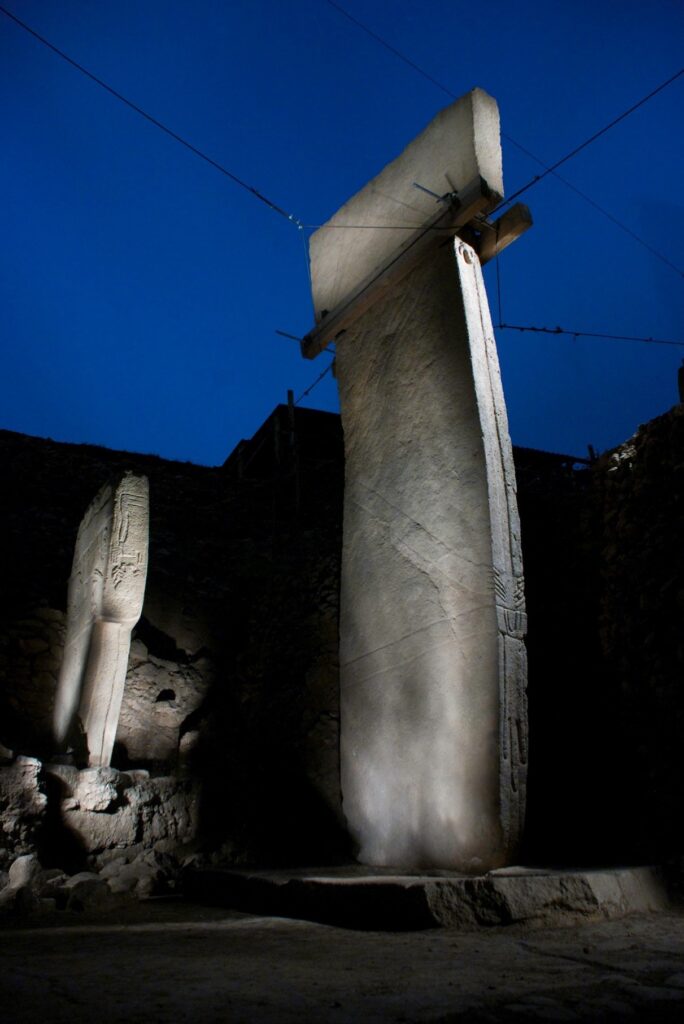
After Schmidt’s death in 2014, another German archaeologist, Lee Clare, took charge of the excavation and conservation works at Göbekli Tepe. Upon digging deeper into the hilltop, Clare and his team found evidence of year-round settlements, in addition to more pillars and mysterious imagery.
Aside from living quarters, other interesting findings include grain processing and brewery equipment, as well as grinding tools. The newfound houses, cisterns, and channels for rainwater collection serve as proof that the excavation site at Göbekli Tepe holds much more than just an impressive temple complex. In fact, once upon a time, it may have actually been a bustling village with all sorts of establishments and activities. Seeing as only 5% of it has been uncovered, we can expect many more fascinating discoveries to come out of that part of Turkey in the years to come.
However, unraveling all the mysteries of Göbekli Tepe is not going to be a fast process. In recent years, the area has become one of Turkey’s biggest tourist attractions. Tens of thousands of people flock to the once remote dig site each year to witness prehistory being rewritten in front of their eyes. While great for the local economy, this influx of tourists significantly slowed down the archaeologists’ progress.
Moreover, the excavations are much more limited in scope now than they were under Schmidt. The focus has shifted to carrying out comprehensive documentation and conservation of the already-exposed structures.
Why is Göbekli Tepe Important?
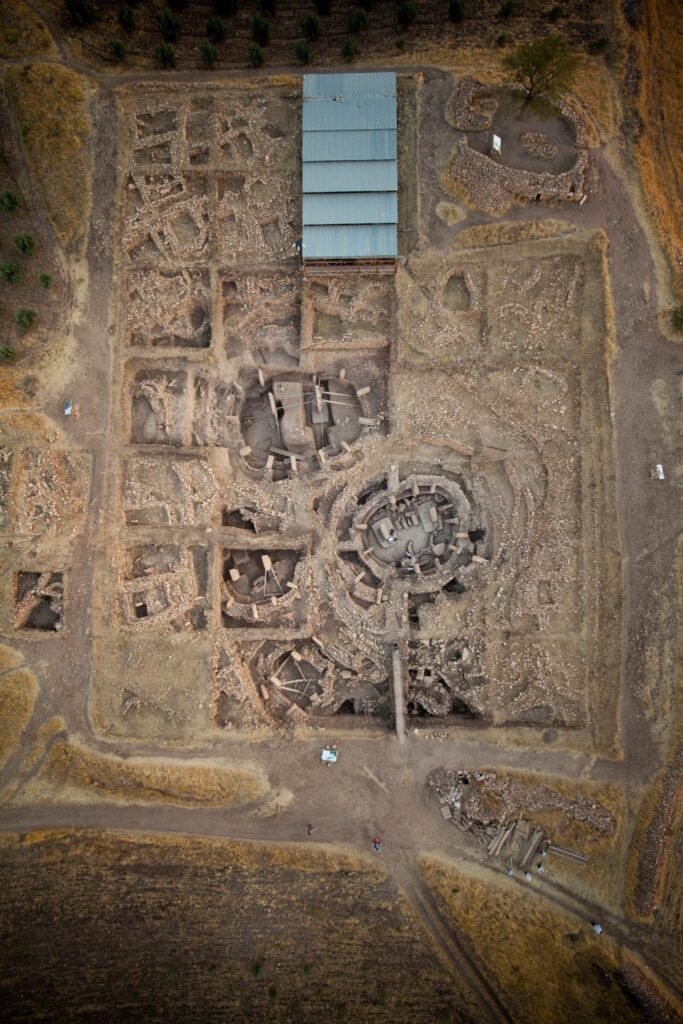
Göbekli Tepe is not only an incredibly interesting finding. The unearthing of this nearly 12,000-year-old, massive temple complex drives a wedge into the academic consensus about prehistoric humans and their way of life. Most of us are taught that hunter-gatherer homo sapiens were incapable of building complex, lasting structures until the Agricultural Revolution. This breakthrough occured when humans first settled down, started cultivating crops, and abandoned their nomadic lifestyles. However, Göbekli Tepe is actually hundreds of years older than the earliest evidence of animal husbandry and agriculture.
Up until the discovery of the buildings at Göbekli Tepe, it was believed that such complex settlements had not existed prior to the Agricultural Revolution. The idea was that villages and towns were built because of agriculture and the resulting grain surplus, which erased the need for people to move around from place to place in search of food. Before then, humans built primitive shelters designed to last for brief periods of time.
With its oldest structures built approximately 12,000 years ago, Göbekli Tepe opens up the discussion about exactly what pre-agricultural communities were capable of creating. The focus on temples and religious worship is particularly fascinating. It shines a light on the priorities of hunter-gatherer societies and their ability to come together and create massive buildings in honor of a higher power.
The Agricultural Revolution prompted humans to settle down in one area. However, the existence of Göbekli Tepe proves that early humans had other reasons to build long-lasting structures. It has forced historians and anthropologists to reconsider the role of spirituality and religion in the development of civilization. In the words of Klaus Schmidt: “First comes the temple, then the city.”
